
» Pressing the Pause Button on Your Child’s Temper Tantrum
» Is My Child’s Behavior Developmentally Appropriate?
» How to Maintain This Year’s Gains for Next Year’s School Year
» Bridging the Gap: The Importance of Older Generations Connecting with Youth
What to Know About Monster Drinks ALSO
BROUGHT TO YOU BY
June 2024 | youthconnectionscoalition.org

Walk-In Care Convenient and comprehensive. Schedule online at Benefis.org/HelenaNorthest. Urgent care services, including lab and X-ray, available seven days a week.




youthconnectionscoalition.org | YC MAGAZINE | June 2024 1 PRODUCED IN CONJUNCTION WITH PARTNER AGENCY BROUGHT TO YOU BY INSIDE JUNE 2024 2 From the Director 5 Confessions from the Kitchen Table 10 Faces in the Crowd 11 40 Developmental Assets 12 Assets in Action 18 Q&A / By the Numbers 6 Pressing the Pause Button on Your Child’s Temper Tantrum 14 Is My Child’s Behavior Developmentally Appropriate 16 How to Maintain This Year’s Gains for Next Year’s School Year 20 Bridging the Gap: The Importance of Older Generations Connecting With Youth 23 What to Know About Monster Drinks FEATURES IN EVERY ISSUE TO ADVERTISE OR CONTRIBUTE Coleen Smith: (406) 324-1032 coleen@youthconnectionscoalition.org COVER PHOTO BY Floating Leaf Studios
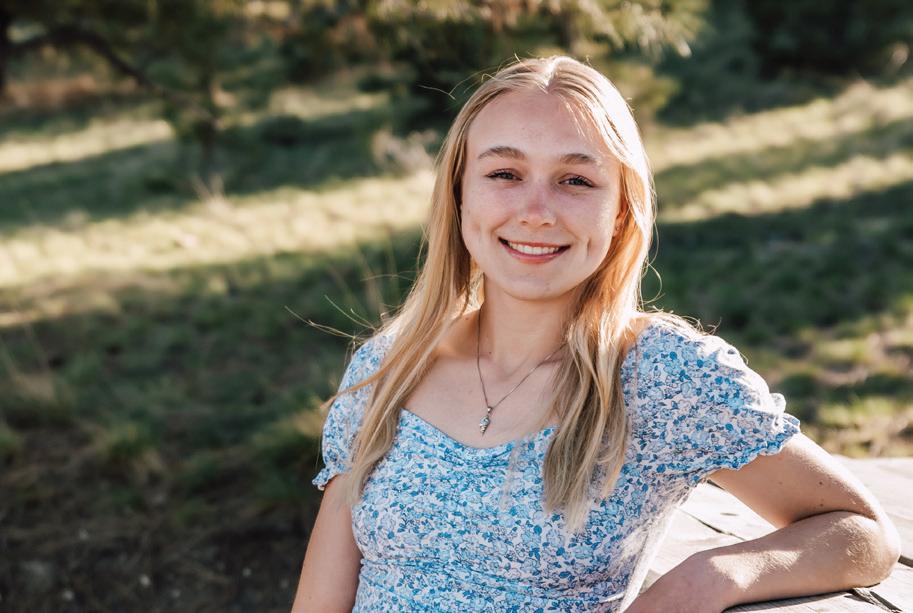
Annika Nehring is a senior at Helena High School. She is a co-valedictorian there, along with being a National Merit Scholar finalist and Presidential Scholar nominee. She has a strong interest in science and is president of the HHS Science Club, and she hopes to study biology with an eye towards medical school when she attends Stanford University in the fall.
Athletics have been a big part of Annika’s life, and she was a varsity volleyball player/captain as well as a high jumper and All-State pole vaulter for Helena High. She also enjoys music, playing piano in the school jazz band. Outside of school, you can catch Annika scooping ice cream at the Big Dipper or hiking with her dog, Skipper. In her free time, she enjoys reading, baking, and watching reality TV.
ON THE COVER ABOUT YOUTH CONNECTIONS
Youth Connections is a coalition of over 1100 community members representing parents, educators, churches, youthserving organizations, businesses, and more who want to make Helena a healthy and supportive place for kids and families. Youth Connections recognizes the need to reduce negative behaviors including substance use and violence while also working to increase positive opportunities and mental wellness for all our local kids.
So how do we do that? We know there is no silver bullet to making communities great, and so we do LOTS of things that we know make communities better. We support agencies and businesses who offer youth activities because we know kids who are involved in positive activities aren’t involved in negative ones. We support student mentoring relationships because research shows it helps kids stay in school and be successful. We also know that when kids know better, they do better, so we support classroom education in the areas of bullying prevention and substance use prevention. Youth Connections also understands we must support the adults in kids’ lives and therefore we provide training, education, networks, and collaborative opportunities for parents and professionals to connect with others who care about kids.
Youth Connections is well known for its quarterly publication, YC Magazine, a resource for parents and the entire community. These are just some of the projects we’re working on to serve our mission of engaging our community to create environments where youth thrive and succeed. For a comprehensive list of activities, services, and ways you can get involved, please visit our website at www.youthconnectionscoalition.org.
Director FROM THE

t’s the end of another school year. Time flies by so fast. The magazine committee was mindful of topics to address some issues that parents may face over the summer. I hope you can find some nuggets that you can use to make life easier.
According to ParentingMontana.org, one of the top issues that parents are looking for advice on are tantrums. We’re thankful that Dr. Len Lantz allows us to reprint his great articles. The feature article gives parents tips on dealing with child outbreaks. As you well know, this can continue into middle and high school and is not necessarily a toddler issue.
To go along with that is the article that addresses knowing if a child’s behavior is developmentally appropriate. I knew one family who thought their child was just “quirky,” but in fact he struggled with ADHD.
As we head into summer, it’s important to keep kids reading and learning. We have an article from a teacher with ideas and tools on how to do that. It’s so much easier for kids if they don’t head back to school having lost everything they learned the previous year.
Summer can also be a time when kids have less supervision. The Q&A on the concerns about Instagram as well as the article on the danger of monster drinks informs parents about a couple things to keep in mind as we head into summer.
One protective factor that can help with a lot of the issues presented in the magazine is connecting kids with a caring older adult, whether it be a grandparent or neighbor. I remember riding my bike to elderly neighbors and having hot chocolate and cookies. Kids can be the center of attention for a bit, and older people love spending time with youth. It was so beneficial to both of us.
We hope this edition addresses some issues you may face this summer. If there is a topic you’d like more information on, please email us and we’ll do our best to find an expert to write on it.
CAN’T GET ENOUGH GREAT RESOURCES? FOLLOW US:
Facebook (for parents): Youth Connections
Facebook (for kids): Find Your Spot
Instagram: @Youthconx
X: @Youthconx
COLEEN SMITH
COLEEN SMITH, YC DIRECTOR Phone: (406) 324-1032 coleen@youthconnectionscoalition.org I
2 June 2024 | YC MAGAZINE | youthconnectionscoalition.org
SUMMER FUN!
• Full day camps (7:30–5:30) include field trips, outdoor fun, park and pool play
• Half day preschool camps
• Half day skills camps for dance, cheer tumbling, gymnastics and ninja sport
• Low instructor-camper ratio and snacks provided at every camp
check out evening gymnastics and cheer classes, plus Open Gym and Parent’s Night Out
& Online Registration: hacmt.com (406) 442-6782 • 3340 McHugh Ln





youthconnectionscoalition.org | YC MAGAZINE | June 2024 3 Details
Also
Active play and learning opportunities for kids of all ages
In Downtown Helena a contemporary hotel along the historic walking mall (406) 443-2200 22 N Last Chance Gulch, Helena, MT 59601

Monday - Friday | 7:30am - 5:30pm Collision/Restoration Services (406) 227-3390 or (406) 461-3054
Services - (406) 422-8286
York Road | Helena MT 59602


At Top Gun Auto Body, we pride ourselves on providing friendly and fast service to our clients, with years of expertise and multiple certifications to back up all of our work.
We know how stressful this process can sometimes be, so let us take some weight o your shoulders by helping you through every step - making the entire process as pain-free and streamlined as possible!
We encourage you to research our Google Reviews!


Shodair




4 June 2024 | YC MAGAZINE | youthconnectionscoalition.org
@TopGunAutoBody TopGunAutoBody.com WILD about
SUMMER CAMP
Daily Schedule:
in at the YMCA
OUTDOOR
For
FREE DAILY TRANSPORTATION TO AND FROM CAMP CHILD PROVIDED! Canoeing Arts & Crafts Swimming Ziplining Archery Disc Golf STEM&literacy activities For more information: helenaymca.org Shodair Children’s Hospital To heal, help, and inspire hope It’s ok to struggle, and it’s ok to ask for help.
For
10 Black Only • For use on items when all 5 Shodair colors are not possible. • For use on embroidered items. • For use when simplicity in logo form is preferred. White Only For use on items when all 5 Shodair colors are not possible. For use on embroidered items. For use when simplicity in logo form is preferred. Gray Scale For use when color printing/reproduction is not possible. For use in black & white news print production. SPECIAL LOGO USAGE Brand Standards Special Logo Usage
Recovery
2809
Montana
June 10th - August 22nd
8:00 am - Check
8:30 am - Shuttle to Camp Child 9 am - 4:00 pm - HAVE TONS OF
MONTANA FUN! 5:00-5:30 pm - Back at the YMCA for pick-up *Fridays pick up will be from 4:00-5:00 PM
campers grades K - 6th for the 2024-25 school year
Shodair has been caring for Montana families since 1896 regardless of ability to pay. Serving all of Montana with locations in Helena and Butte,
offers individual counseling, family therapy, inpatient acute and residential psychiatric services for children and adolescents, occupational and speech therapy, medication management, and school-based services.
more information visit shodair.org or call 406.444.7500
CONFESSIONS FROM THE KITCHEN TABLE
Overcoming Adversity Without Substances
As parents, we often take care of ourselves last. Society has also told us to take a pill or have a drink to cope. This can lead us down the path of addiction, or at the very least unhealthy behaviors, which are never helpful. Several people have shared their story on what they did to get out of that mindset and take positive steps to deal with adversity or struggles in their own lives.
“When my mother passed away, it seemed that we were all using alcohol and unhealthy eating to cope. It is such a terrible idea to turn to alcohol when you are in emotional pain. One thing that pulled me out of this dark place was signing up for a “Biggest Loser” challenge at our local gym. By replacing my daily drinking habit with working out and healthy eating, I was able to get in a much better place emotionally and physically. As a side note, I won the competition, and I felt it was a great way to honor my mother!”
“When my stepson died by suicide, my husband and I were thrown into a tailspin. It was so unexpected. So often in times of adversity people automatically turn to alcohol or drugs to numb the pain. Alcohol being a depressant just made it worse. And it definitely didn’t numb the pain! We started attending GriefShare at a local church, and they talked about how going outside, getting fresh air, and truly appreciating your surroundings were great therapy. We started walking 2 1/2 miles every morning. It helped us refocus our grief, and getting exercise outside was very helpful.”
“My mom always told me not to drink alone when I was going through something emotional. I deal with adversity by running, doing yoga, and going to therapy to take care of my physical health and emotional health. It definitely has been more helpful than trying to cope by using substances.”
“From early 2020 until earlier this year, I faced several life-changing events such as separation, divorce, medical diagnoses for my son and myself of autism and ADHD, and I moved five times. I made the decision to become sober as I worked with my physician, therapist, and functional wellness specialist. I changed up my exercise routine and took the appropriate medications and supplements to support in balancing my hormones. My therapist worked with me to understand
grief and the healing process. I make sure I focus on my sleep and practice gratitude and grounding. There is no one-sized fits all coping mechanism, but I found many healthy options for support. Overcoming adversity is also a timepiece. It took time and most often, I had to face what I needed to, which meant feeling the feelings and processing the emotions and learning to fall apart to learn to rebuild and overcome.”
“After my second baby, I started suffering from post-partum depression. On top of this, we moved to a new town where I knew no one, my husband was in an intensive school with the military so was never home, we lived in a small apartment, and I had two kids under the age of three. I had no family nearby either. I started drinking to “deal” with the depression. Of course it didn’t work (it never does!). Taking care of two kids when you don’t feel well isn’t fun either. I finally called my doctor, and he prescribed some anti-depressants to get me over the hump, explaining that my brain had re-wired after my pregnancy. I also got involved in our church and found a mommy and me group to get out of the house. It wasn’t easy, but it was easier than having to deal with an addiction on top of everything else.”
“Professional counseling can help you understand social and emotional learning and intelligence while deconstructing trauma, grief, and unhealthy generational patterns. If professional help is not financially or socially an option, the book How to do the Work by Dr. Nicole LePera goes over the basics of recognizing unhealthy patterns and creating new healthy patterns and coping and communication skills.”
“There are podcasts by topic searching for grief, loss, divorce, or parenting. Many therapists can also be found on Instagram, such as Dr. Nicole LePera (@the.holistic.psychologist), Dr. Jen Douglas (@drjenofficial), Dr. Daniel Amen (@docamen), and Dr. John Delony (@johndelony).”
(These recommendations are not to replace therapy but are suggestions from people who have used them.)
For many of us the kitchen table represents the typical family experience. We have laughed while having family game night. We have cried over our children’s choices. We have blown out the candles on many cakes. We have argued our way out of doing the dishes. We have struggled through those “three more bites.” We have learned hard lessons and celebrated many deserved successes. One thing is for sure though—if our kitchen tables could talk, there would be plenty of stories! So often it is in relating to others’ stories that we realize there isn’t always one answer, or even a right answer. Parenting is hard work! If you have a story of lessons learned, we invite you to share it with our readers. Sometimes, knowing we aren’t the only ones struggling to find the answer is all the help we need. YOU CAN SUBMIT YOUR STORY AT: coleen@youthconnectionscoalition.org
youthconnectionscoalition.org | YC MAGAZINE | June 2024 5
TEMPER TANTRUM YOUR CHILD’S pressing the pause button
Len Lantz, M.D.
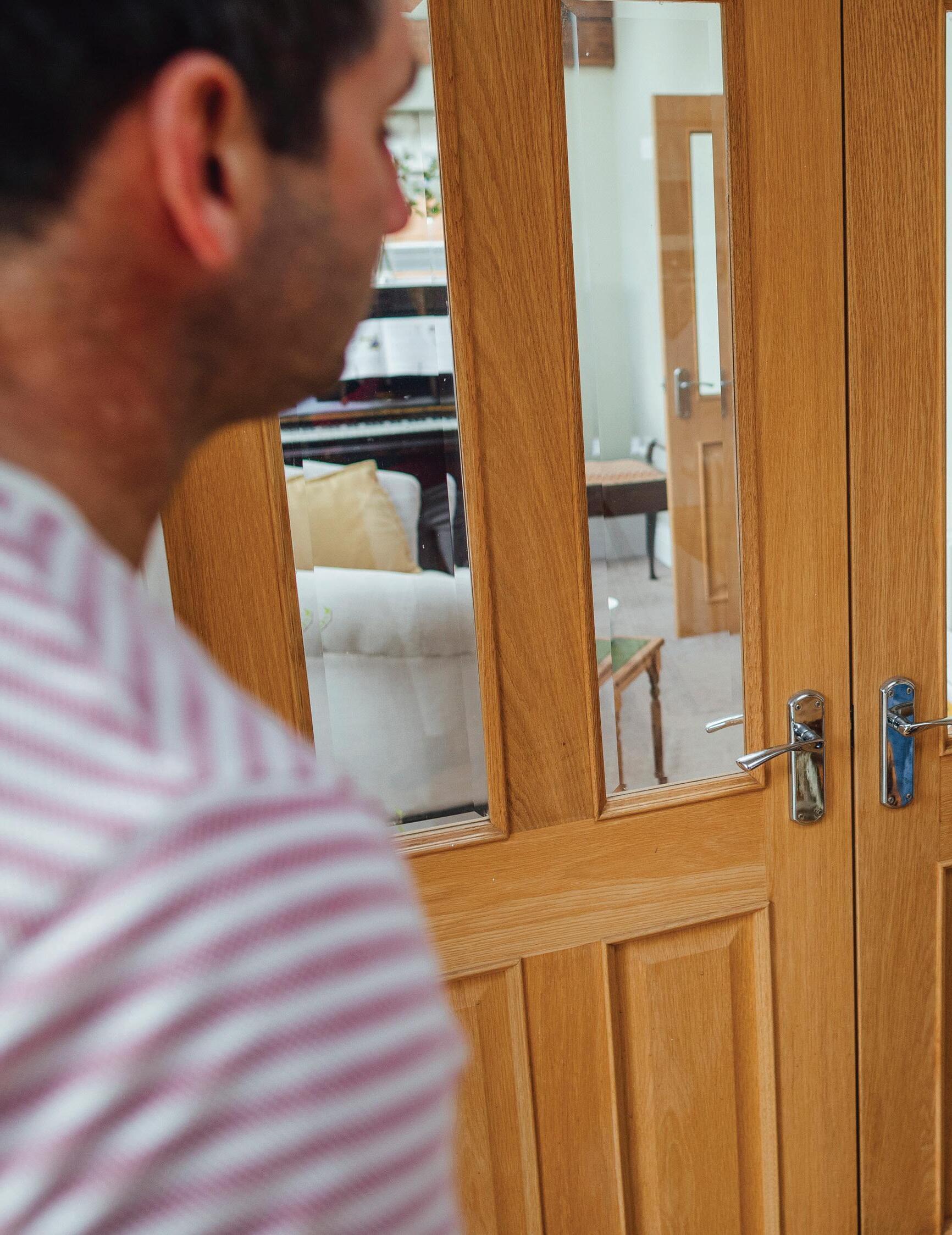
TANTRUM CHILD’S

Do you ever wish you could do that?
That you actually had a remote control and could just press pause – even for a moment – to collect your thoughts and calm down before having to deal with your kid’s emotional meltdown? If you ever feel that way, please know that you are not alone. Many parents feel this way. What makes it even harder to help our kids when they are yelling, crying, moaning, or thrashing around is that when you ask them something reasonable like, “What’s the matter?”, they can’t tell you why. Or their reasons make no sense to you.
To top it off, when our kids are exploding, we often have a sense that we are supposed to do something – immediately. We feel pressured to help them in their suffering. We want peace and quiet. We think that we are somehow failing as parents, which amplifies feelings of shame, frustration, and doubt.
TEACHABLE MOMENTS AND ANGER OUTBURSTS
There is this idea of a “teachable moment” in parenting lore. It goes something like this: a teachable moment is an opportune/ unplanned moment in time when a parent can communicate their values or an important truth to their child when their child is most receptive to adopting those values or learning that truth. The problem is that teachable moments are very misunderstood.
Parents have commonly been led to believe that every moment is a teachable moment in which the parent is required to be the teacher and provide direct and immediate intervention. Let me be clear, you don’t always have to be your child’s “teacher” – or their therapist, for that matter. Teachable moments do not always require:
• Another person – kids can and do learn many things by working through experiences without the help of anyone else.
• The parent to be the teacher – kids can learn from other kids, adults, animals, nature, books, etc.
• Direct intervention – parents can supervise a situation without intervening and responsibly observe their child grapple and eventually cope with that situation.
• Immediate intervention – kids often have a very hard time learning while they are upset or in the middle of a distracting activity, but children often spend a lot of time thinking later about situations they’ve experienced to gain understanding and assign meaning.
If you are a big fan of teachable moments, please consider that teachable moments might require you to take a step back from the situation if you want to help your child learn to manage their emotional outbursts.
YC MAGAZINE | June 2024 7
continued on page 9
button on






HERE'S TO THE CLASS OF 2024! CONGRATULATIONS GRADUATES! From all the community partners committed to keeping youth healthy and safe
YOU CAN HELP YOUR CHILD ONCE YOU LEARN TO RIDE OUT THE STORM OF THEIR MELTDOWNS
Kids get upset for a myriad of reasons, often over things that you believe are completely mundane. Kids frequently get upset over things so small that parents convince themselves that there is no reason or trigger for the anger. Your child might be upset because you said “no” to McDonald’s on the way home from school. They might be mad the second you tell them to brush their teeth and get ready for bed at night. What can you do about this?
In my role as a pediatric psychiatrist, I talk a lot with kids and their parents about these situations. One pattern that I’ve seen among many parents of irritable kids, is that once the child blows up, the parent reacts too quickly. I see parents making the error of “Don’t just stand there. Do something!” and so they try many different strategies in an attempt to get the child to calm down faster. A parent might ask numerous questions, tell the child to stop yelling (or even yell at the child to do so), inform the child that there is “no reason” to be upset, or threaten consequences if they don’t calm down quickly. The most common reason parents intervene are:
• Feeling responsible for actively teaching your child emotional regulation skills
• Feeling that your child is not being reasonable
• Feeling disrespected by your child and a failure as a parent
• Feeling embarrassed, guilty, and ashamed
• Feeling angry at your child, yourself, or both
• Feeling overwhelmed with an intense desire to make your child stop
Because of their own emotional responses, parents oftentimes feel compelled to react to their child’s meltdown and do something—anything—to get them to calm down ASAP. Unfortunately, kids learn virtually no new skills when they are upset, and neither do you. Reacting too quickly when kids are upset typically backfires. As often as not, intervening too early can fuel or intensify the anger outburst. Whether or not they are already angry at you, the moment you step in to get them to calm down can result in becoming the target of the anger.
Things often worsen at this point. Once kids become convinced that their parent is as mad at them as they are at the parent, the
anger outburst becomes prolonged and can degenerate into a series of arguments that span the entire day. If you deal with this you might become a much happier parent if you try the opposite strategy when your child gets angry: “Don’t just do something. Stand there.”
START THE STOPWATCH ON YOUR PHONE WHEN YOUR CHILD GETS UPSET
That’s one of the first strategies you can use to ride out the storm of your child’s anger outburst. As long as your child is not completely out of control (dangerous or destructive), it is completely reasonable for you to select the proactive parenting strategy of timing the duration of the anger outburst. Note: Do not record the anger outburst on video as this worsens anger outbursts by humiliating the child.
Why would you time the duration of anger outbursts? Well, you need data. Parents often overestimate the duration of their child’s anger outbursts (and children notoriously underestimate the duration). By the way, you don’t have to be in the same room as your child when you are timing the duration of their outburst, especially if they are being rude or if you think your presence is agitating them.
If you take the steps to learn how long it takes your child, on average, to calm themselves down without assistance, then you will have the information you need in order to determine what to do about it. In the rare event that your child is routinely having anger outbursts lasting over an hour (in response to one trigger), it’s a good idea to have them assessed for a mood disorder. More commonly, the duration of anger outbursts for kids lasts from a few minutes to around 15 minutes. The potential side benefit is that you might just witness that your kids can calm themselves down if you give them the time and space to do so.
If you are not able to tolerate letting your child yell or cry for longer than a few seconds, consider setting a timer on your phone for five minutes once your child becomes upset. Once the timer goes off, you are then free to intervene in your usual manner. What is the purpose of this strategy?
• It helps you to set healthy boundaries with yourself to ensure that you are not intervening too early.
• It allows your child time to learn to selfsoothe.
• It will allow you to see how often your child can regulate their own emotions
without your help.
• At some point in their development, your children need to learn the skill of emotional self-regulation.
WHAT IF MY CHILD IS COMPLETELY OUT OF CONTROL?
Obviously, if your child is putting themselves in danger, damaging property, or attempting to harm themselves or someone else, there is a need for you to immediately intervene (sometimes physically). If this happens more than once, it’s often time for you to schedule a meeting with your child’s pediatrician or involve professional mental health support.
Sometimes kids are not physically dangerous during an anger outburst, but they are disrespectful/abusive in some other way, such as shouting curse words, calling you names, or saying they hate you. If every time a child receives a consequence it triggers another emotional meltdown, it’s time for parents to involve professional help.
ADDITIONAL BENEFITS OF BEING SLOW TO REACT TO YOUR CHILD’S ANGER
Being slow to react to your child’s anger will allow to you begin to see the triggers of your child’s anger more clearly. If your child sees that you are calm even after they blow up when you say no, they’ll learn that you are intentional and firm in your parenting decisions. They will respect you more, even if they are not willing to admit it. If you know the general time it takes for your kids to calm down when upset, you’ll feel less anxious when they get angry. Lastly, if you are not engaging with them every time they get upset, you are less likely to be in conflict with them the entire day.
YOU CAN HELP YOUR CHILD LEARN TO REGULATE THEIR EMOTIONS WITHOUT ATTEMPTING TO CONTROL EVERY OUTBURST
The simple strategy of riding out the storm of your child’s anger outburst can yield tremendous benefits. Imagine how relieved you’ll feel as you see your child learn to selfregulate without requiring you to intervene every time. The strategy of observing, delaying, and/or timing the anger outburst does not work for every situation, but it’s a great place to start. You might just surprise yourself with how well and how quickly your kids learn to self-soothe. It feels great to have fewer conflicts over your child’s anger outbursts and be able to no longer feel like you’re walking on eggshells around them. In the end, you’ll both be happier. ■
youthconnectionscoalition.org | YC MAGAZINE | June 2024 9 continued from page 7
Check out who’s standing out in our community.
IS THERE SOMEONE YOU’D LIKE TO NOMINATE?
Please email coleen@youthconnectionscoalition.org and tell us why this individual has stood out in your crowd.

Murphy Koerten
BROADWATER ELEMENTARY SCHOOL, KINDERGARTEN
Murphy is a sweet, funny, and kindhearted leader in our kindergarten classroom. Murphy demonstrates a deep love for school. While at school, she strives to do her best work and grow her brain each and every day. On her days off, Murphy still loves to play school at home with her family. Murphy is extremely inclusive of others in the classroom and, throughout the school, she is always looking to help others be their best self. Murphy not only excels at her academics, but she also plays super hard outside. Murphy loves to ski, fish, and play outside with her family. We are so lucky to have her in our classroom, school, and as a member of our community!
Reece Sebestyen EAST VALLEY MIDDLE SCHOOL, 7TH GRADE
Reece is a 13-year-old 7th grader at East Valley Middle School in East Helena. He is the 2024 Lewis and Clark County Spelling Bee Champion. The word that Reece spelled correctly for the victory was ‘rhythmically.’ He bested 26 other county school students in grades six through eight. Reece not only excels as a student at EVMS but also enjoys staying active by skateboarding and playing sports such as basketball, football, and lacrosse. He also likes to cook. In fact, he hopes to attend Montana State University to obtain a business degree so he can open his own restaurant someday. Congratulations, Reece!

Bernie Casey
Liv Perry CAPITAL HIGH SCHOOL, 12TH GRADE

Liv is an intelligent, focused and hard worker who excels at figure skating and school. She has competed for the Helena Figure Skating Club for two years. She loves being an assistant coach during Learn to Skate classes and helping out with the young, new skaters. She is a positive influence on the young skaters whom she has helped coach in this community. Her passion for skating is taking her to Nationals in San Diego this summer! She excels in art and has been chosen to be the editor of the Helena Public School art magazine, Pen and Ink. All her hard work shines through with everything she does every day!
“Berno the Inferno,” as he is affectionately called, has been an avid supporter of sports. At Legion and Babe Ruth baseball games, he always brought a big tub of bubble gum to games to hand out to the team then shared with the kids in the stands. He was a long-time volunteer for Bobcat football, never missing a game. He proudly wears team apparel and at crosstown may layer both jerseys, switching at half time. He was once the main spokesperson for Bozeman Special Olympics and carried the torch for the opening ceremony. He loves to help in any way. He is a member of Helena Kiwanis and volunteers to ring the bell for the Salvation Army. Thanks, Berno, for your passion in helping others!
Helena Cyclones


The Helena Cyclones is a mountain bike racing team comprised of student athletes in grades 6-12 from Helena, East Helena, Montana City, and surrounding area. The team competes in the Montana Interscholastic Cycling League, a league of the National Interscholastic Cycling Association (NICA). NICA provides leadership, services, coach licensing and training, insurance, and governance for local leagues to produce quality mountain bike events. The Helena Cyclones have club and race team options for students. Everyone is welcome and everyone rides. The team’s core management and coaching team has a head coach, a team manager, and two other assistants, along with 35 volunteer, certified ride leaders and coaches. 2024 will be Montana’s 6th year with a state-wide NICA league. For more information, visit helenacyclones.org.
10 June 2024 | YC MAGAZINE | youthconnectionscoalition.org



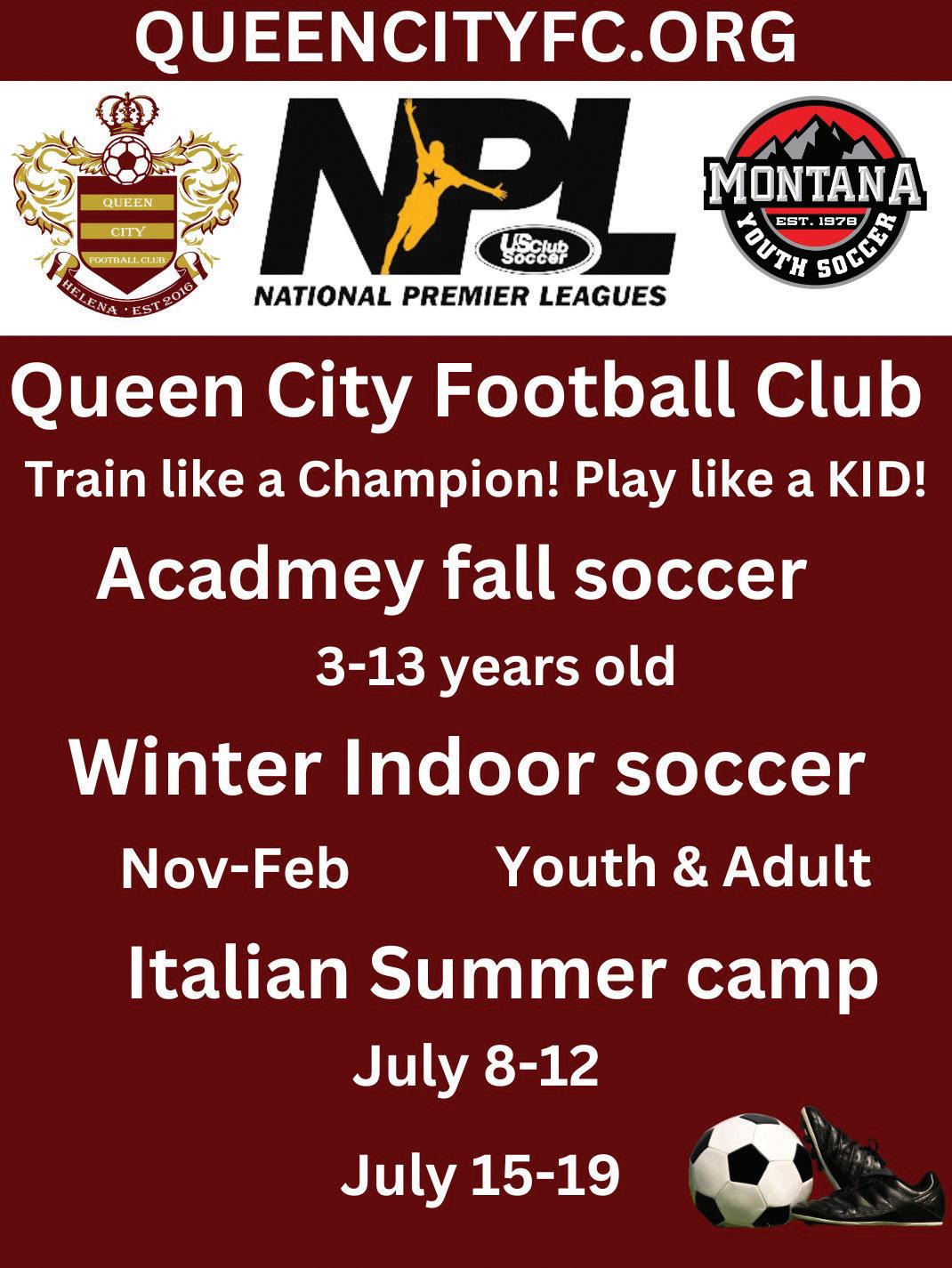
DEVELOPMENTAL ASSETS
40 Developmental Assets are essential qualities of life that help young people thrive, do well in school, and avoid risky behavior.
Youth Connections utilizes the 40 Developmental Assets Framework to guide the work we do in promoting positive youth development. The 40 Assets model was developed by the Minneapolis-based Search Institute based on extensive research. Just as we are coached to diversify our financial assets so that all our eggs are not in one basket, the strength that the 40 Assets model can build in our youth comes through diversity. In a nutshell, the more of the 40 Assets youth possess, the more likely they are to exhibit positive behaviors and attitudes (such as good health and school success) and the less likely they are to exhibit risky behaviors (such as drug use and promiscuity). It’s that simple: if we want to empower and protect our children, building the 40 Assets in our youth is a great way to start.
Look over the list of Assets on the following page and think about what Assets may be lacking in our community and what Assets you can help build in our young people. Do what you can do with the knowledge that even through helping build one asset in one child, you are increasing the chances that child will grow up safe and successful. Through our combined efforts, we will continue to be a place where Great Kids Make Great Communities.
youthconnectionscoalition.org | YC MAGAZINE | June 2024 11
40
Turn the page to learn more! The 40 Developmental Assets® may be reproduced for educational, noncommercial uses only. Copyright © 1997 Search Institute®, 615 First Avenue NE, Suite 125, Minneapolis, MN 55413; 800-888-7828; www.search-institute.org. All rights reserved. • HEAVY DUTY TOWING • MEDIUM TOWING • LIGHT DUTY TOWING • LONG DISTANCE RECOVERY • TRAILER TOWING • RV TOWING Top Gun Recovery is a proven and trusted towing service, outfitted with the most up-to-date equipment in the Helena Valley. • HORSE TRAILER TOWING • FLATBED, LIFTS & DOLLIES • FUEL DELIVERY • TIRE REPAIR • JUMP STARTS • LOCKOUTS TopGunRecovery.com 2809 York Road, Helena MT 59602
assets in action 40 DEVELOPMENTAL ASSETS
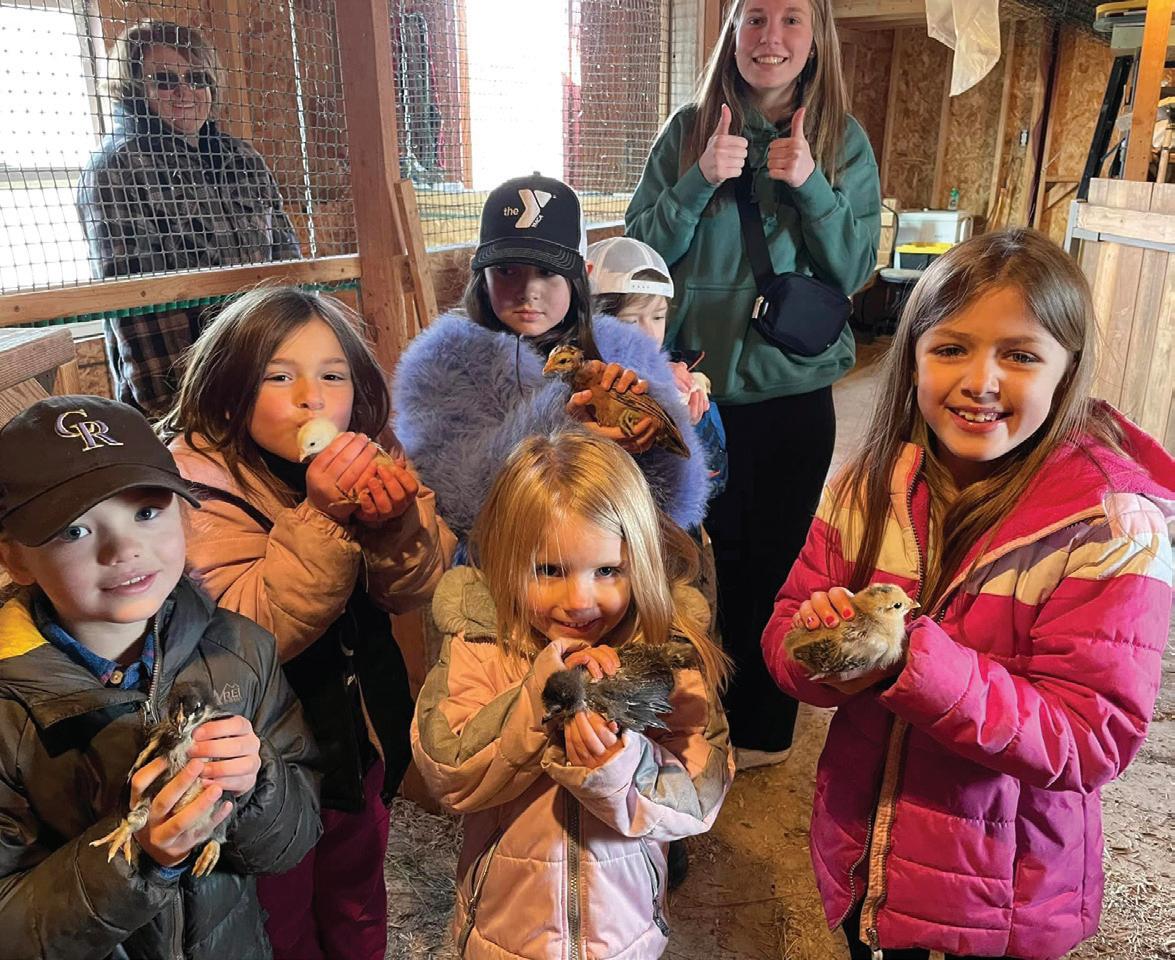


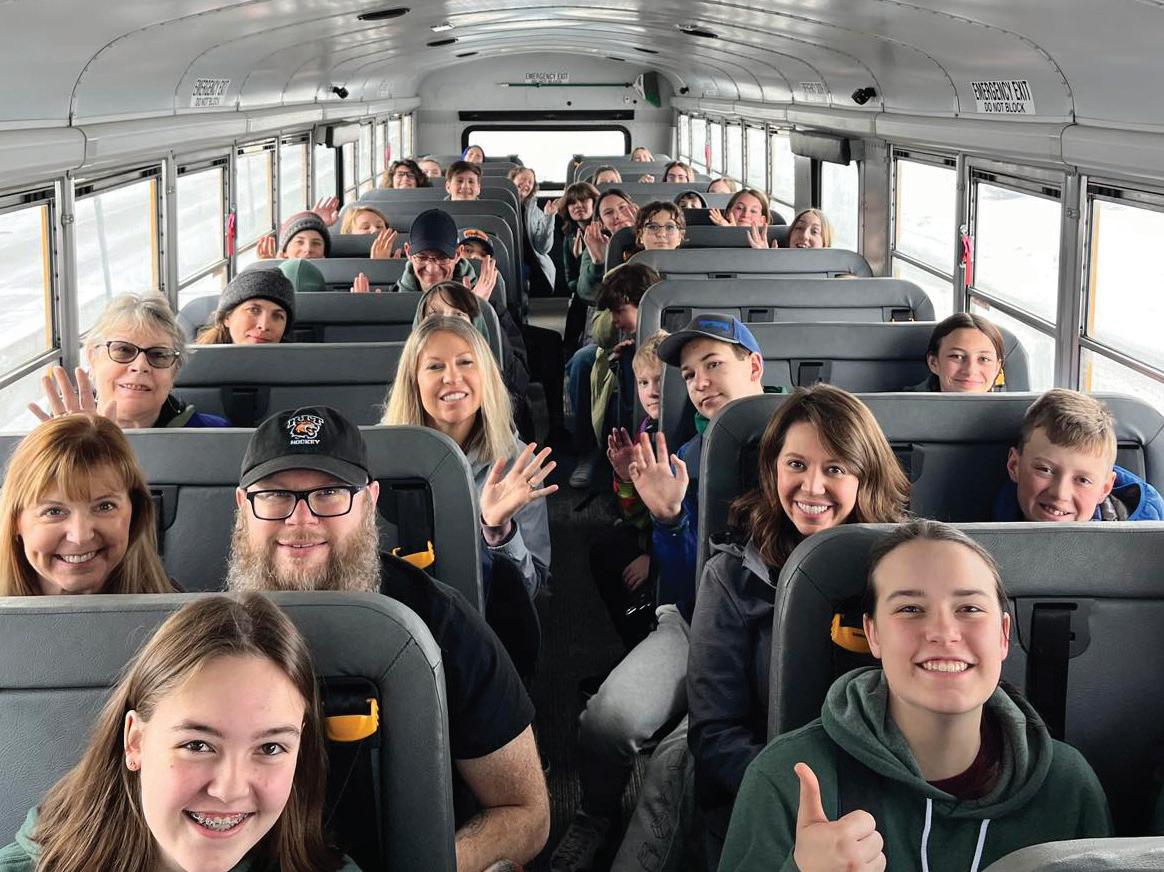
SUPPORT
1. Family support: Family life provides high levels of love and support.
2. Positive family communication: Young person and her or his parent(s) communicate positively, and young person is willing to seek advice and counsel from parent(s).
3. Other adult relationships: Young person receives support from three or more nonparent adults.
4. Caring neighborhood: Young person experiences caring neighbors.
5. Caring school climate: School provides a caring, encouraging environment.
6. Parent involvement in school: Parent(s) are actively involved in helping young person succeed in school.
EMPOWERMENT
7. Community values youth: Young person perceives that adults in the community value youth.
8. Youth as resources: Young people are given useful roles in the community.
9. Service to others: Young person serves in the community one hour or more per week.
10. Safety: Young person feels safe at home, at school, and in the neighborhood.
BOUNDARIES & EXPECTATIONS
11. Family boundaries: Family has clear rules and consequences and monitors the young person’s whereabouts.
12. School boundaries: School provides clear rules and consequences.
13. Neighborhood boundaries: Neighbors take responsibility for monitoring young people’s behavior.
14. Adult role models: Parent(s) and other adults model positive, responsible behavior.
15. Positive peer influence: Young person’s best friends model responsible behavior.
16. High expectations: Both parent(s) and teachers encourage the young person to do well.
CONSTRUCTIVE USE OF TIME
17. Creative activities: Young person spends three or more hours per week in lessons or practice in music, theater, or other arts.
18. Youth programs: Young person spends three or more hours per week in sports, clubs, or organizations at school and/or in the community.
19. Religious community: Young person spends one or more hours per week in activities in a religious institution.
20. Time at home: Young person is out with friends “with nothing special to do” two or fewer nights per week.
12 June 2024 | YC MAGAZINE | youthconnectionscoalition.org 18 8 4
YMCA campers having fun at spring break camp
14
CR Anderson Music goes to New York
Boy Scouts prepare used trees as fish habitat
4-H
member shows off her presentation
If you or your child would like to submit a picture that represents one of the 40 Developmental Assets, please email coleen@youthconnectionscoalition.org with a picture and the number of the asset the picture represents.
COMMITMENT TO LEARNING
21. Achievement motivation: Young person is motivated to do well in school.
22. School engagement: Young person is actively engaged in learning.
23. Homework: Young person reports doing at least one hour of homework every school day.
24. Bonding to school: Young person cares about her or his school.
25. Reading for pleasure: Young person reads for pleasure three or more hours per week.
POSITIVE VALUES
26. Caring: Young person places high value on helping other people.
27. Equality and social justice: Young person places high value on promoting equality and reducing hunger and poverty.
28. Integrity: Young person acts on convictions and stands up for her or his beliefs.
29. Honesty: Young person “tells the truth even when it is not easy.”
30. Responsibility: Young person accepts and takes personal responsibility.
31. Restraint: Young person believes it is important not to be sexually active or to use alcohol or other drugs.
SOCIAL COMPETENCIES
32. Planning and decision making: Young person knows how to plan ahead and make choices.
33. Interpersonal competence: Young person has empathy, sensitivity, and friendship skills.
34. Cultural competence: Young person has knowledge of and comfort with people of different cultural/racial/ethnic backgrounds.
35. Resistance skills: Young person can resist negative peer pressure and dangerous situations.
36. Peaceful conflict resolution: Young person seeks to resolve conflict nonviolently.
POSITIVE IDENTITY
37. Personal power: Young person feels he or she has control over “things that happen to me.”
38. Self-esteem: Young person reports having a high self-esteem.
39. Sense of purpose: Young person reports that “my life has a purpose.”
40. Positive view of personal future: Young person is optimistic about her or his personal future.



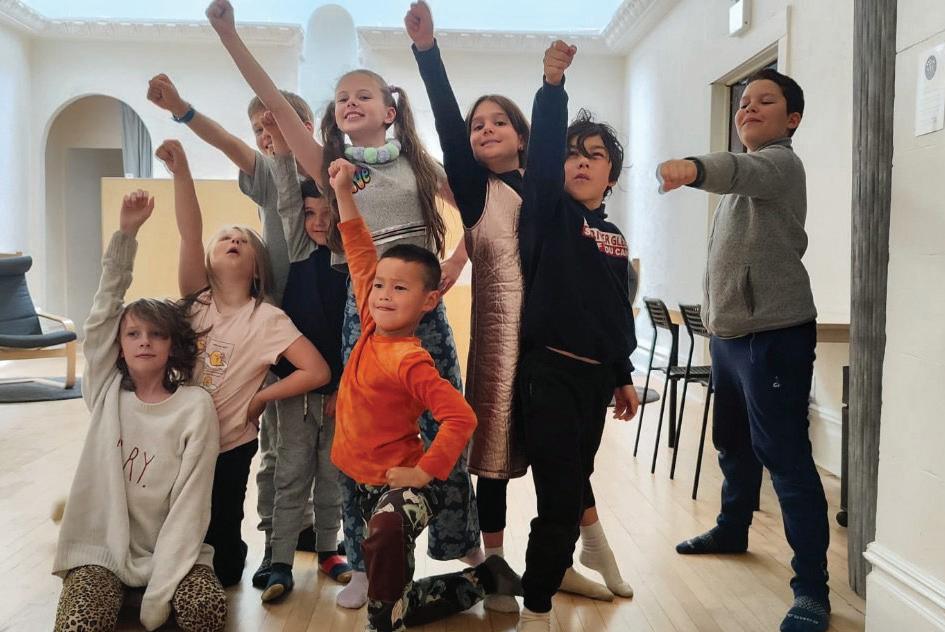
youthconnectionscoalition.org | YC MAGAZINE | June 2024 13 37 34 24 28
Students at ALC Cottonwood show their enthusiasm
all
are guaranteed publication.
Not
pictures
Culture night at HMS learning about Cuba
Middle school students return to Kessler for carnival
East Helena H.S. students competed at Business Professionals of American
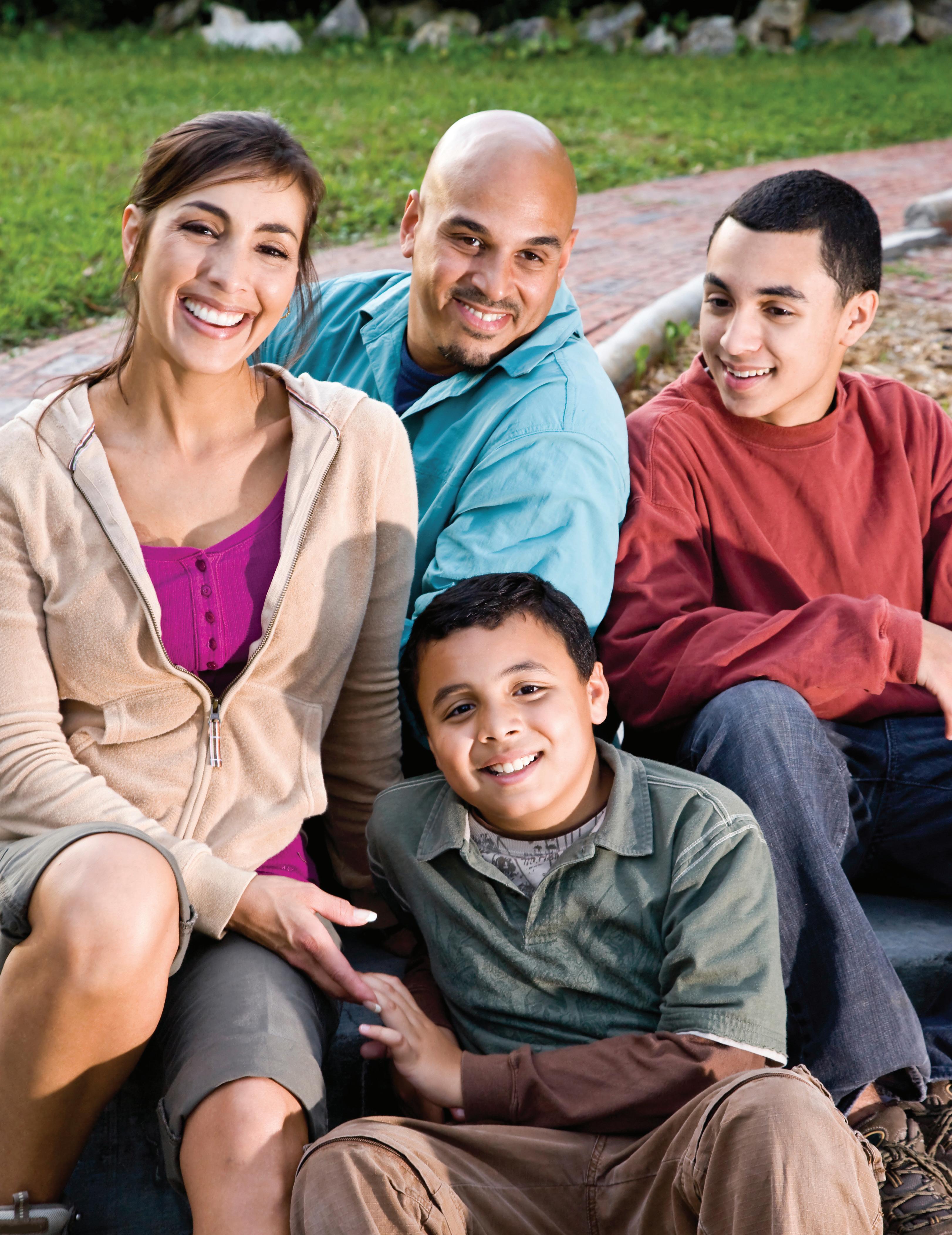
DEVELOPMENTALLY APPROPRIATE? is my child’s behavior
By SUSAN FREW, LCPC, LMFT
As a mental health clinician, I spend a great deal of time touching base with parents and caregivers about their children and their behaviors. I get asked all too often, “What is appropriate for their age and when should I be concerned?”
For your peace of mind, and for the wellbeing of your child, it is important to know which behaviors are typical parts of mental and emotional development and which warrant concern.
LYING
This behavior, while not exclusive to one age group, is not often an overwhelming concern in and of itself. In elementary school, kids may share stories of events that did occur but offer additional details that may not have happened. I often ask younger children, “Is this something that actually happened, or is this something you wish would have happened?” For older children (middle/high school), lying is frequently associated with concealing information that they do not want their parents to know, often because they fear their parents will not approve. It can be helpful to try to understand the reason or motive for your child’s lie. It is important to not ask questions you already know the answer to, as this can create mistrust for both the parent and child. Lying becomes concerning when it is paired with other concerning behaviors.
MELTDOWNS/IRRITABILITY
Children of all ages experience big feelings that they don’t know what to do with or are unable to manage. This is also known as ‘Emotional Dysregulation.’ It is not unusual for children to come home from school and be more irritable and have more intense feelings after keeping it together all day. Their home is usually the safe place to share and show these intense feelings. As a clinician, I can say it is not typical for school-aged children (elementary through high school) to be melting down in school or around the community. At this time in
If your child is exhibiting multiple concerning behaviors, it is time to reach out and seek additional support from your child’s pediatrician and/or local mental health provider. With all behaviors, the key is to try and understand what is behind their behavior because all behavior is a form of communication
their lives, there is an understanding of the etiquette that is required in various public settings. No matter the child’s age, if a meltdown or irritability becomes aggressive (hurting themselves, others, or property) it is time to reach out for help. With support, children can learn ways to manage the feelings they are having in a safe, constructive way.
SLEEP
Sleep is an important function for all humans. Being well-rested ensures our cognitive abilities (memory, attention, processing, etc.) can fully operate. The more well rested we are, the better we can manage our emotional experiences, as well. Children in elementary and middle school require 9-12 hours of sleep per night, whereas high schoolers require 8-10 hours. Concerns with sleep can include not being able to get to sleep, staying asleep, difficulty waking up, sleepwalking, sleep talking,
frequent nightmares, and insomnia. If your child experiences these multiple times per week, be sure to reach out to a pediatrician or mental health professional to determine if there are strategies to help and ensure a better night’s sleep. It should also be noted that children who sleep too much can also be of concern. As with most things in life, we need to help kids strike a healthy balance.
ARGUING/BACKTALKING
Children of all ages are figuring out how to talk and work with authority figures in their lives. As they become older, we may start to see more arguing and backtalking as they explore how to have their voice heard. Often the adults in their lives tend to see this as disrespectful. Some arguing and backtalk is normal as they explore the boundaries of the child/adult relationship. As parents and caregivers, it is important that we stay calm inside and out. Children pick up on non-verbal cues. Even when the adult is not yelling or arguing, the child may be tuned in to your frustration. When does this behavior start to become a concern, how can we help our child(ren)? It is important to seek support if the child’s behavior continues to increase in intensity, even as the adult remains calm and reflectively listens.
The behaviors mentioned here were chosen based on my years of experience as a clinician and questions I have received over the years from parents and caregivers. If your child is exhibiting multiple concerning behaviors, it is time to reach out and seek additional support from your child’s pediatrician and/or local mental health provider. With all behaviors, the key is to try and understand what is behind their behavior because all behavior is a form of communication. A professional can help translate a child’s behavior, so the parent knows what they want and need. In addition, they can provide strategies to help you and your child get those needs met. ■
youthconnectionscoalition.org | YC MAGAZINE | June 2024 15
HOW TO MAINTAIN THIS YEAR’S GAINS for the next school year
By WARD LAKE, 3rd Grade Teacher
Why is it important to keep your kids reading and continue learning over the summer?
Teachers will tell you how important it is to maintain the achievements gained over the school year by continuing learning and reading over the summer. In a recent study by Harris Cooper, a psychology professor at Duke University, he found children on average lost a month of grade level achievement score over the summer after giving standardized tests before and after summer break.
To avoid “summer regression,” it’s important for parents to keep kids academically active. Most experts recommend reading at least 30 minutes a day for Kindergarten–3rd and 60 minutes for 4th–12th. To make the time recommendations fun and effective, your child should be reading a “just right” book. To do this have your child read a page from the book. If they make more than five mistakes on the page, the book is too difficult for them. On the other hand, no mistakes is below their reading level. However, all reading is good, but the “just right” book will be the challenge they need without causing frustration.
Here are some tips to help you and your child achieve their reading goals:
• Read aloud with your children every day; set a consistent time to create a routine.
• Read the same book your child is reading and discuss it.
• For struggling readers, read the same book multiple times.
• Go to the library regularly; research book clubs.
• Subscribe to popular children’s magazines in the child’s name (Sports Illustrated for Kids, Highlights for Children, National Geographic World, etc.).
• Have children read billboards and signs.
• Talk with your child’s teacher and find out what your child should be reading; ask next year’s teacher for ideas on topics.
To make sure your child understands what they are reading, ask questions and have them tell you about the book. If they are struggling with comprehension, try reading with them.
• Find out what your child likes to read –let their interests lead the choice.
• Set a good example – let them see and hear you read.
• If a child likes a movie, have them read the book.
• Find a series or author that they like.
• Have them keep a list of words they don’t know in a journal or on a bookmark to build vocabulary.
• Create a bingo chart with different genres (mysteries, poetry, adventure, science fiction/fantasy, non-fiction, etc.); offer appropriate rewards.
It’s more important to focus on the amount of time read, not the number of pages. Keep in mind reading speeds are different - pleasure might be fast and nonfiction may be slower. With the Common Core requirements, there is a push for increased non-fiction reading. These types of books are becoming readily available and more enjoyable for children. For example, biographies on sports heroes and important people from history, science topics, machinery, etc.
To make sure your child understands what they are reading, ask questions and have them tell you about the book. If they
are struggling with comprehension, try reading with them. You can also read to them and have them tell you about the story. Many children’s books are available to download and read on iPads or computers. This gives children the opportunity to follow along as they’re being read to. Check out www.education.com for free downloads of featured books to share throughout the summer.
An inexpensive and fun way to increase your library at home is to look at garage sales and research book exchanges. Kids love having their own books.
Students will also benefit by keeping up on their writing skills over the summer. They can do this by:
• Becoming a pen pal, either by actually writing or emailing, with friends, cousins, grandparents, other family members. (See our article on the benefits of kids connecting with an older adult.)
• Keep a summer scrapbook of pictures, postcards, ticket stubs, etc. and have them write about the experience with captions.
• Start a summer journal. Write every day about things that have happened.
• Write a never-ending story. Start a story and write every day. Others can add to the story to give it a twist. It helps keep the child engaged.
There are many math websites that allow students of all ages to practice their basic math skills. Check out www.math.com or www.mathplayground.com. If students are having specific problems, they can get help at www.kahnacademy.org. It re-teaches the concept that the student is struggling with and is available for all levels. This could be especially effective during the school year for help with homework.
Everybody needs a break and time to relax, but in order to pick up where they left off instead of struggling to catch up next fall, summer learning is a must. ■
16 June 2024 | YC MAGAZINE | youthconnectionscoalition.org

Why should I be concerned about my child being on Instagram?
Instagram is very popular with children and adults for its ability to share photos and reels to all your friends and everyone else. According to Officer Gomez, here’s what parents need to know:
1. Many kids have up to five Instagram accounts on their phone. They have their main account (for moms, dads, and grandparents) and they have their four spam accounts for different groups of friends or activities. Click on their name at the top of the screen for a dropdown of secondary accounts.
2. Many accounts of school-age kids glamorize vaping, drugs, and sexualization.
3. Nearly every school (not hosted by the school) has fake Instagram accounts that are used to harass and degrade other students.
(Yourschoolname)_confessions: This page is for people to post pictures and reveal secrets about what’s happening at the school. I have battled the drama from these pages the most at the schools. (Yourschoolname)_fights: This page is dedicated to all the fights and confrontations in a larger area than the school. Some kids will send representatives to fight kids at other schools just so they can get the video on this page.
(Yourschoolname)_Smashorpass: Kids post a picture of fellow students on this page, and everyone says if they would smash (have sex with) or pass. AKA: Kiss or Miss and many other similar names.
(Yourschoolname)_rachetlist: This is a page dedicated to pictures of female students who people think have sex with everyone. This one is usually not based in any reality but ends up being very hurtful to the female students.
As these pages are protected by free speech, they are very hard to get removed.
4. Instagram has a vanish mode which deletes photos, videos, and messages once they are seen. In message screen, swipe up from the middle of the screen to enter vanish mode.
5. Instagram is being used for many money and sextortion scams across every age group.
Contrary to popular belief, police cannot just ask Instagram to delete the pages. Police can report it and sometimes Instagram will delete the page. Unfortunately, if the page gets deleted, it can be started again under a new name in a few minutes by any student at the school.
For more information on Smash or Pass or Vanish mode you can type “Officer Gomez (topic)” into the Facebook search bar and find specific articles on these issues.
2
60 The miles per hour a sneeze travels
The number of natural fears we’re born with: fear of falling and fear of loud sounds

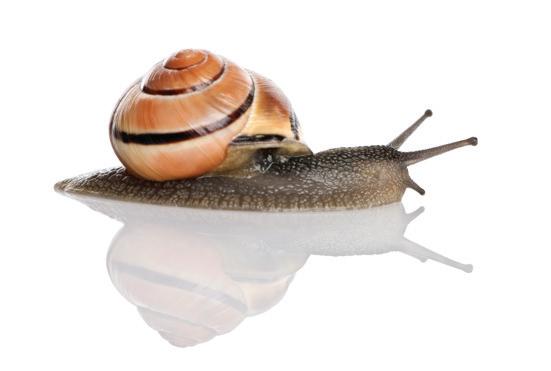
3
The number of years a snail’s nap can last
100,000
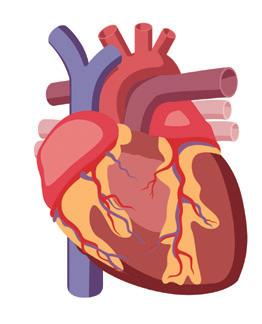

78
The percentage of NFL players who have a financial crisis within two years of retirement
20,000

18 June 2024 | YC MAGAZINE | youthconnectionscoalition.org
The number of times your heart beats a day
number of trees cut per day to produce the world’s toilet paper HAVE A QUESTION? coleen@youthconnectionscoalition.org We cannot guarantee all questions will be published; however, we will do our best to respond to all questions submitted. NUMBERS
The
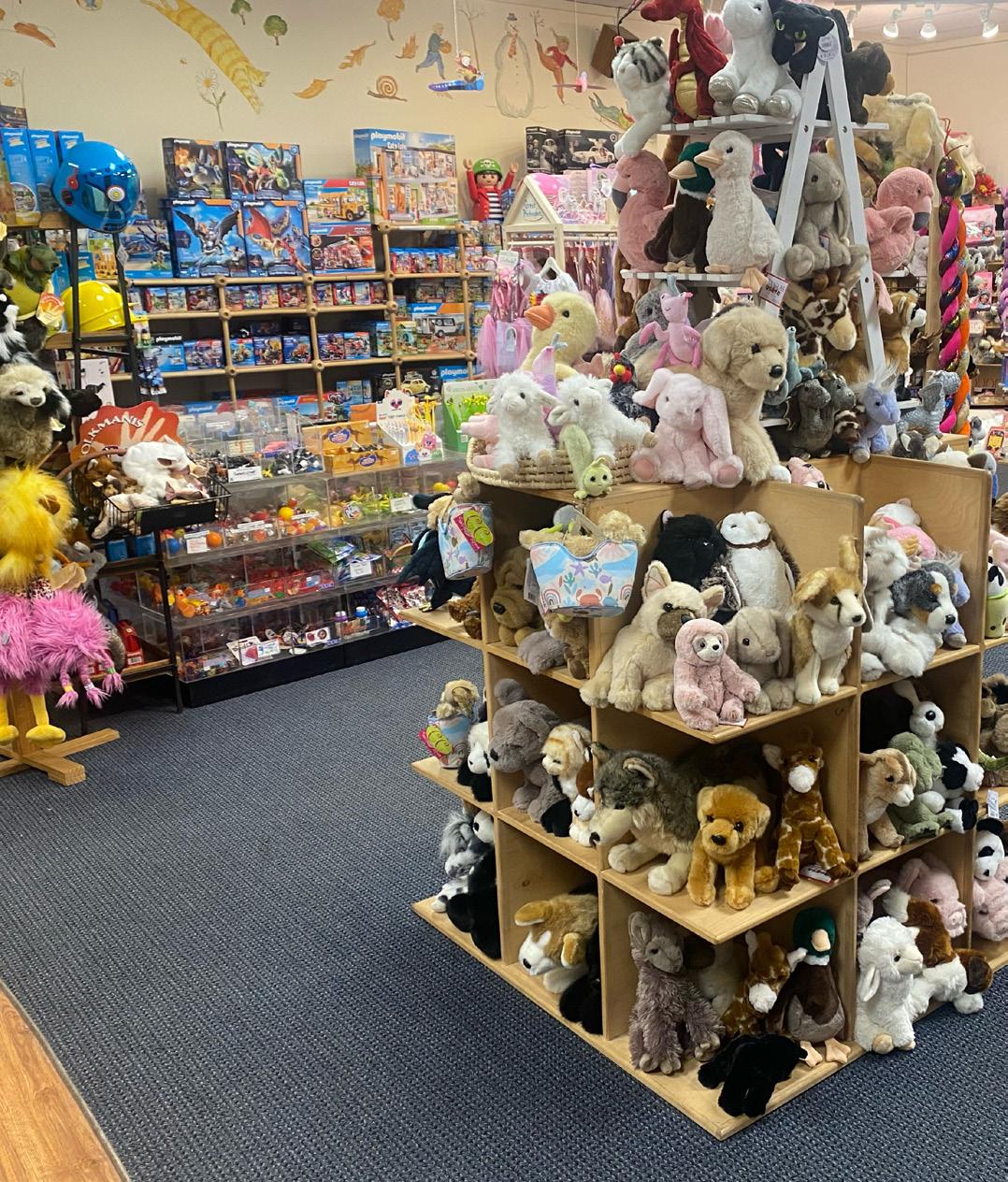


youthconnectionscoalition.org | YC MAGAZINE | June 2024 19
local toy store with a large selection of unique high quality toys!” info@lassothemoontoys.com 406-442-1594 | www.lassothemoontoys.com Downtown on the Walking Mall
“Wonderful,

THE IMPORTANCE OF OLDER GENERATIONS CONNECTING WITH YOUTH bridging the gap:
In a rapidly changing world marked by technological advancements, shifting societal norms, and evolving cultural landscapes, the connection between older generations and youth has never been more crucial. While generational gaps and differences in perspectives may sometimes seem impossible, fostering meaningful intergenerational connections is essential for the well-being of individuals and the strength of communities. The profound benefits that come with connecting older generations with youth are significant.
Older generations possess a wealth of wisdom and life experience accumulated over decades of living through various trials, triumphs, and transformations. Their insights, garnered from navigating the complexities of life, hold invaluable lessons for the younger generation. By engaging with older individuals, youth can tap into this reservoir of knowledge, gaining practical advice on everything from career choices to personal relationships. Through mentorship and guidance, older generations have the opportunity to impart timeless wisdom, empowering youth to make informed decisions and navigate life’s challenges with confidence.
Intergenerational connections facilitate a meaningful exchange of perspectives, fostering empathy, understanding, and respect across age divides. Each generation brings its own unique set of experiences, values, and worldviews shaped by the sociocultural context of their time. By bridging the gap between generations, individuals can gain a deeper appreciation for the struggles, triumphs, and aspirations of those who came before or after them. This exchange not only cultivates a sense of interconnectedness but also promotes a more inclusive and compassionate society where diverse voices are valued and heard.
Connecting with older generations provides youth with a vital link to the past, enabling them to learn from history and preserve cultural heritage. Older adults serve as custodians of collective memories, cultural traditions, and ancestral wisdom passed down through generations. Through storytelling, shared experiences, and cultural practices, youth can gain a deeper
Fostering
intergenerational connections is essential for nurturing future leaders, innovators, and change-makers equipped to address the complex challenges of the 21st century.
understanding of their roots and heritage. This connection to the past not only instills a sense of identity and belonging but also fosters a greater appreciation for the rich tapestry of human history and culture.
Intergenerational connections play a crucial role in combating social isolation and loneliness, particularly among older adults. In an increasingly digital and fast-paced world, many older individuals may find themselves marginalized or disconnected from mainstream society. By engaging with youth, they can find companionship, purpose, and a renewed sense of belonging. Whether through intergenerational programs, community initiatives, or family bonds, these connections provide older adults with opportunities for social interaction, emotional support, and meaningful engagement, enhancing their overall wellbeing and quality of life.
Fostering intergenerational connections is essential for nurturing future leaders, innovators, and change-makers equipped to address the complex challenges of the 21st century. By connecting with older generations, youth can draw inspiration from their resilience, perseverance, and trailblazing accomplishments. Whether in the realms of science, politics, arts, or activism, older individuals serve as role models and mentors, igniting the spark of ambition and possibility in the next generation. Through shared experiences, collaborative endeavors,
and intergenerational dialogue, they can cultivate a new generation of leaders committed to building a more just, equitable, and sustainable world.
One of the simplest yet most effective ways for youth to connect with older adults is by exploring shared hobbies and interests. Countless activities transcend age barriers, whether gardening, painting, playing music, or even birdwatching. By engaging in these shared pursuits, both parties can bond over their passion and learn from each other’s experiences.
Volunteering together for a common cause is a powerful way for youth and older adults to connect while making a positive impact on their community. Whether it’s organizing a charity event, participating in environmental clean-ups, or serving meals at a soup kitchen, working side-by-side fosters camaraderie and a sense of purpose. Through volunteerism, youth and older adults can develop empathy, compassion, and a deeper understanding of each other’s perspectives.
Older adults possess a wealth of knowledge, experiences, and stories that offer valuable insights into history and culture. Youth can engage with older adults through storytelling sessions, oral history projects, or simply by listening to their anecdotes and memories. These interactions preserve valuable heritage and foster empathy and understanding across generations.
The connection between older generations and youth is a cornerstone of vibrant communities, resilient societies, and a brighter future for all. By fostering meaningful intergenerational connections, individuals can bridge the gap between the past, present, and future, creating a tapestry of shared experiences, wisdom, and aspirations. In an age of rapid change and uncertainty, these connections serve as anchors of stability, continuity, and hope, uniting generations in a common journey of growth, learning, and mutual support. As we embrace the diversity of voices and experiences that enrich our world, let us recognize the transformative power of intergenerational connections in shaping a more inclusive, compassionate, and interconnected society.. ■
youthconnectionscoalition.org | YC MAGAZINE | June 2024 21








22 Find out more about our program at mo ntanalearning.o rg Montana’s Premier Science Camp for Kids Summer Camps savor it all Rule No 8 *Requires a Stockman Bank Savings account. Amount needed to open account and minimum balance required is waived for customers 18 and under. Member FDIC | Equal Housing Lender
Receive a special Coin Bank with your initial opening deposit*
Save $100 and take home your very own cuddly, stuffed Stevie! FOR KIDS 10 & UNDER Montana’s Brand of Banking
•
•
MONSTER DRINKS what to know about
By STAFF
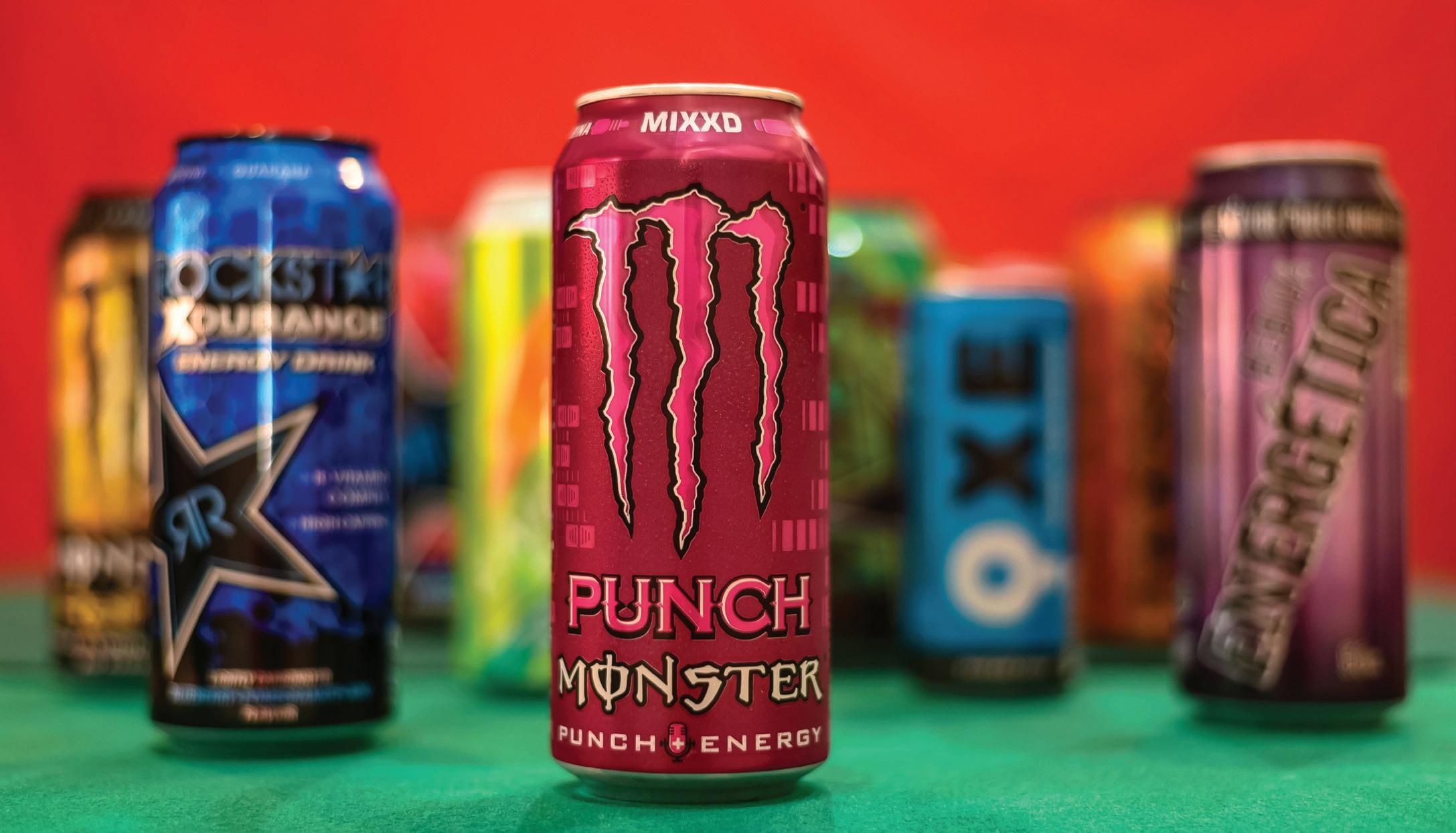
Arecent study of 57 previous studies looked at what monster drinks are doing to youth. The conclusion was consumption by children and young people had a strong association with numerous adverse physical and mental health outcomes. These energy drinks are non-alcoholic drinks that contain high amounts of caffeine and sugar in addition to other stimulants like taurine, ginseng, and guarana. Below shows a chart of the amount of caffeine in different drinks.
sensation-seeking and delinquent behaviors were associated too.
Other behaviors that are associated with consuming energy drinks are short sleep duration, poor sleep quality and low academic performance. Not surprising, if youth aren’t getting enough or good sleep, their schoolwork can suffer.
Most concerning was the connection with drinking energy drinks and mental health issues. Youth who consume these monster drinks had an increased risk of suicide, psychological distress, attentiondeficit-hyperactivity disorder (ADHD) symptoms, as well as depressive and panic behaviors.
Other concerning beverages are the energy shots. They are a lot smaller, but often contain the same amount of caffeine as the energy drink.
The study found a strong association between drinking energy drinks and smoking, alcohol use, binge drinking, and other substance use as well as the intent to use. In fact, the study reported the energy drinks increased the odds of current smoking and vaping, and also increased starting smoking and vaping one year later. In addition,
Researchers also found that youth who use these beverages often have a higher body mass index (BMI) and unhealthy weight control behaviors, such as one-food diets, fasting, diet pills, and purging. This could be from the high sugar content or consuming energy-dense fast foods, snack foods, and skipping breakfast regularly.
Youth report using these products because of taste and energy seeking, but also social and peer influence.
It’s important for parents to understand the detrimental effects of these energy drinks and educate their kids about them. ■
youthconnectionscoalition.org | YC MAGAZINE | June 2024 23
BEVERAGE Energy Drink (vary in size)
serving size) Tea (1 cup serving size)
(2 cups serving size) MG OF CAFFEINE 50–505 mg 90 mg 50 mg 34 mg
Coffee (1 cup
Cola



24 June 2024 | YC MAGAZINE | youthconnectionscoalition.org Think construction isn’t for her? Think again. build-montana.org A career in construction can provide your child or student: • Good wages • Generous Benefits • Career growth • Paid training


Youth Connections 1025 N Rodney Helena, MT 59601








































































